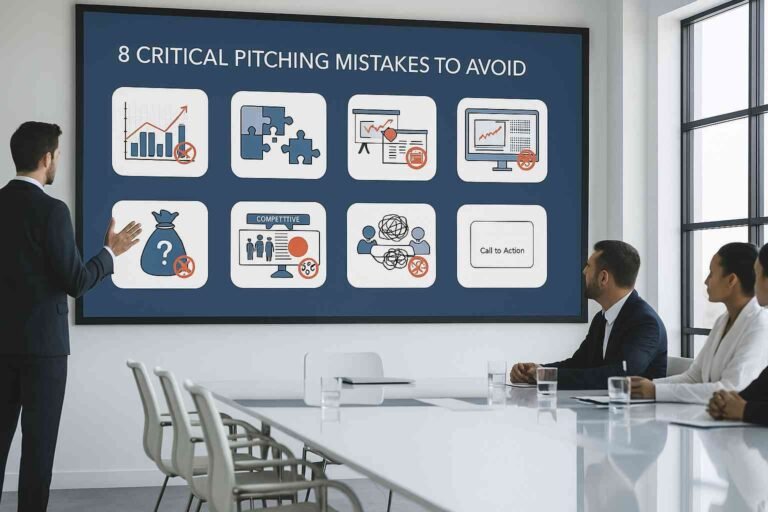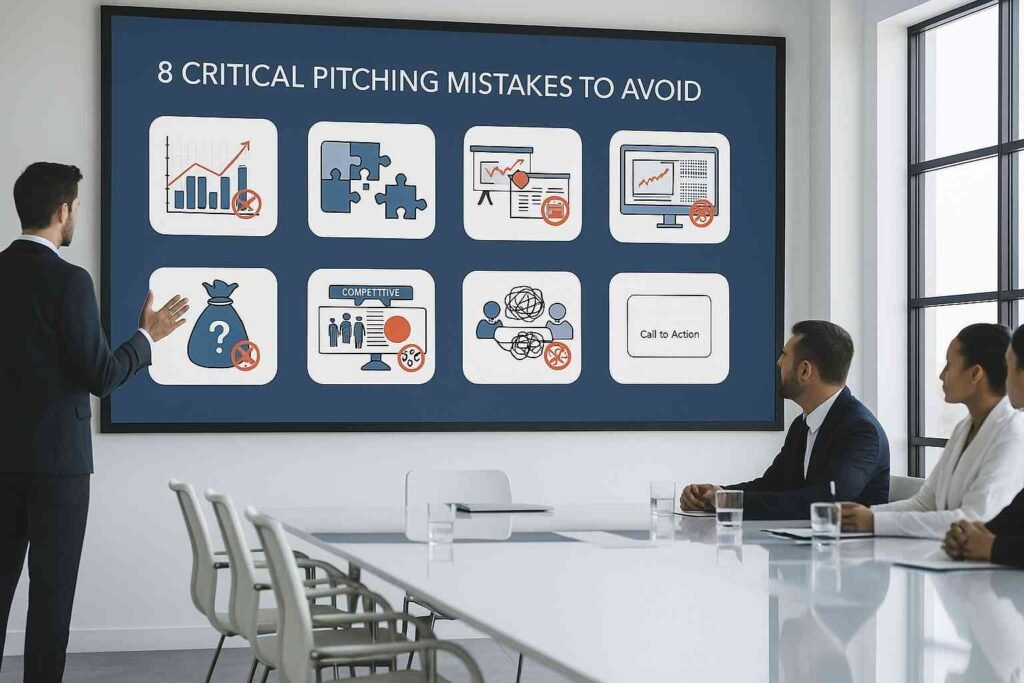Introduction
In today’s threat-filled digital world, cybersecurity startups are more vital than ever — but also face fierce competition for funding. So how do you grab an investor’s attention when you’re one of hundreds claiming to “secure the future”? The answer: a compelling cybersecurity pitch deck.
This blog will guide you step-by-step on how to build a pitch deck that earns trust, shows traction, and gets funded — tailored specifically for cybersecurity founders and teams.
1. Understand What Investors Expect in Cybersecurity
Cybersecurity is complex, technical, and high-stakes. Investors want to feel:
- Your product solves a real, timely threat
- Your team understands the industry and the risks
- You can scale and stay compliant with regulations
- You’ve thought about competition and differentiation
Before you even build the deck, answer these:
- What’s the attack vector your product solves?
- Who’s your buyer — enterprise? government?
- What regulations apply — HIPAA, GDPR, SOC 2?
2. Must-Have Slides in a Cybersecurity Pitch Deck

Here’s a cybersecurity-optimized structure:
| Slide | What to Include |
| 1. Title Slide | Logo, tagline, contact |
| 2. Problem | Show the evolving threat or breach risk |
| 3. Solution | Your tech — simplified |
| 4. Market Opportunity | Founders, CISO, and advisor board |
| 5. Product Demo | Interface, architecture, threat detection flow |
| 6. Competitive Landscape | Gartner Magic Quadrant, matrix comparisons |
| 7. Business Model | Pricing tiers, deployment methods (SaaS, on-prem) |
| 8. Traction | Logos, revenue, partnerships, certifications |
| 9. Go-to-Market Strategy | Sales channels, key hires, alliances |
| 10. Team | How much use of funds, and what’s next |
| 11. Ask | How much, use of funds, and what’s next |
Need more ideas? Explore our simple pitch deck structure guide for visual inspiration.
3. How to Visually Tell a Story of Trust

Cybersecurity buyers and investors have one big concern: trust.
So design your deck to reflect:
- Minimalist, clean layout (dark mode often works well)
- Consistent iconography (padlocks, shield, network maps)
- Use case storytelling (e.g., “How we blocked a phishing breach for X client”)
- Show compliance badges (ISO, SOC 2) clearly
Pro Tip: Avoid overly technical jargon — even tech investors want clarity.
4. Examples of Differentiation That Win
Highlight one or two standout differentiators:
- AI-enhanced anomaly detection? Explain the impact, not the code.
- Real-time dashboard? Include a product screenshot.
- Proprietary algorithm? Show its threat catch rate vs. competitors.
You can also showcase:
- Red team penetration test results
- Whitepapers or patents (link in appendix)
5. Common Mistakes in Cybersecurity Pitch Decks
Here are pitfalls to avoid:
- Too much text or acronyms (CVE, EDR, XDR… simplify!)
- No proof of traction or certifications
- Claiming “we have no competitors”
- Ignoring compliance/regulatory mandates
- Not quantifying threat impact
6. Real-World CTA Slide Example
Here’s an example for your final ask:
We’re raising $2.5M to expand our zero-trust endpoint platform to enterprise clients.
Funds will go toward:
- Expanding our CISO sales team
- Completing SOC 2 Type 2
- Scaling integrations with Microsoft and AWS
This is clear, confident, and investor-friendly.
Final Thoughts
A cybersecurity pitch deck isn’t just a funding tool — it’s your story of trust, innovation, and readiness.
Tailor your deck to speak your investor’s language, demonstrate technical strength with clarity, and most importantly — show why you are the right team to defend tomorrow’s digital world.
Want to explore how storytelling boosts trust? Read Why Your Slides Still Matter in the Age of AI.
FAQs
1. What should I include in the product slide of a cybersecurity pitch deck?
Focus on your core value proposition, simplified visuals of your tech stack, and screenshots or mockups of your product in action.
2. How do I show traction in cybersecurity if I don’t have big clients yet?
Highlight certifications, beta testers, press mentions, pilot programs, or early feedback from security communities.
3. Should I include compliance details like GDPR or SOC 2?
Yes. Investors look for compliance-readiness as a marker of enterprise viability. Briefly note what you’ve achieved and what’s in progress.
4. What design style works best for cybersecurity pitch decks?
Use a dark, clean, professional layout with icons, screenshots, and minimal text. Avoid clutter or technical overload.
5. How long should my cybersecurity pitch deck be?
Ideally 10–13 slides. Use appendices for technical whitepapers, patent info, or compliance certificates.









